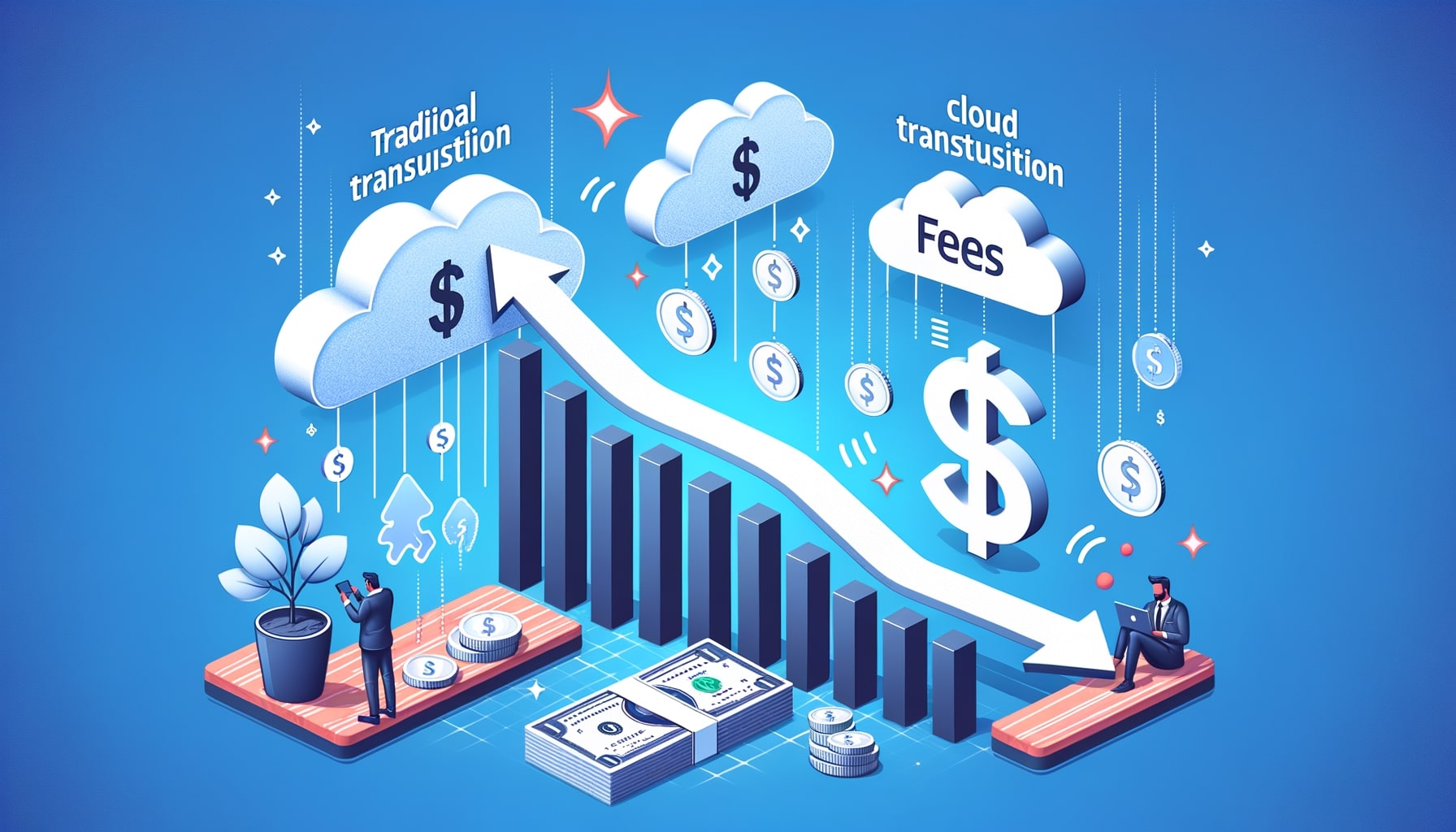Introduction to Cloud Payments
The evolution of digital transactions has paved the way for innovative payment solutions, with cloud payments emerging as a pivotal technology. This article explores the intricacies of cloud payment systems, their advantages, security measures, and commonly asked questions. By integrating cloud computing with payment processing, businesses and consumers enjoy streamlined, secure, and efficient financial transactions.
Understanding Cloud Payments Solution
Cloud payment solutions involve the use of cloud computing technology to process and manage payment transactions. Instead of relying on traditional on-premises payment systems, businesses can leverage the power of the cloud to securely store and process payment data. Cloud payments solution typically involve the use of software-as-a-service (SaaS) platforms that provide businesses with the necessary tools and infrastructure to accept and process payments. These platforms often offer features such as payment gateways, virtual terminals, recurring billing, and reporting and analytics capabilities.
Advantages of Cloud Payment Processing

Adopting cloud payment processing presents numerous benefits for businesses across various industries, enhancing operational efficiency, security, and customer satisfaction. Here’s a deeper dive into these advantages:
Cost-Effectiveness and Scalability
Cloud payments reduce the need for costly hardware and allow businesses to scale their payment processing capabilities with ease. This flexibility is crucial for accommodating growth and seasonal fluctuations in transaction volume.
Enhanced Customer Experience
With cloud payments, businesses can offer their customers a smoother, faster checkout experience across multiple platforms, leading to increased satisfaction and loyalty.
Real-Time Analytics and Insights
Cloud-based solutions provide businesses with real-time access to payment data, enabling better decision-making through analytics and insights into consumer behavior.
Security in Cloud Payments

The adoption of cloud payment systems has surged, driven by their convenience and efficiency. However, the security of transactions remains a paramount concern for both businesses and consumers. Cloud payment providers implement several advanced security measures to protect sensitive data and ensure the integrity of transactions. Here’s an overview of the key security measures in place within cloud payments:
Encryption and Tokenization
This section details how encryption and tokenization protect sensitive data during transmission and storage, ensuring that customer information remains secure.
Compliance with Standards
An overview of the Payment Card Industry Data Security Standard (PCI DSS) and how cloud payment providers comply with these regulations to safeguard payment processing.
Advanced Fraud Detection
Exploration of the advanced algorithms and machine learning technologies used in cloud payments system to detect and prevent fraudulent transactions in real-time.
Challenges in Cloud Payment Adoption
While cloud payment processing offers numerous benefits, there are also challenges associated with its adoption. One of the primary challenges is the resistance to change from businesses that are accustomed to traditional payment systems. Some businesses may be hesitant to migrate their payment processes to the cloud due to concerns about data security, reliability, or the complexity of implementation.
Another challenge is the integration of cloud payment solutions with existing systems. Businesses may already have established payment systems in place, and integrating cloud payment solutions with these systems can be a complex task. It requires careful planning and coordination to ensure a seamless transition without disrupting existing operations.
Furthermore, regulatory compliance can pose a challenge in cloud payment adoption. Different countries and industries have varying regulations regarding the storage and processing of payment data. Businesses must ensure that the cloud payment solution they choose complies with these regulations to avoid legal and financial consequences.
Future of Cloud Payments

The future of cloud payments looks promising, with continued advancements in technology and increasing adoption by businesses. According to a report by MarketsandMarkets, the global cloud payment market is expected to grow at a compound annual growth rate (CAGR) of 18.8% by 2028. This growth can be attributed to factors such as the increasing demand for contactless payment solutions, the rise of e-commerce, and the need for enhanced security in payment transactions.
The adoption of cloud payment solutions is also expected to be driven by the growing popularity of mobile payments. With the proliferation of smartphones and the increasing preference for mobile shopping, businesses need to provide seamless and secure mobile payment experiences. Cloud payment solutions enable businesses to accept mobile payments easily, thereby catering to the evolving needs of customers.
Moreover, advancements in technologies such as artificial intelligence (AI) and machine learning (ML) are expected to further enhance cloud payment processing. These technologies can be leveraged to detect and prevent fraudulent transactions, improve payment authorization processes, and provide personalized payment experiences to customers.
Popular Cloud Payment Providers
There are several cloud payment providers in the market, each offering unique features and capabilities. Some of the popular cloud payment providers include:
- Stripe: Stripe is a leading cloud payment provider that offers a comprehensive suite of payment processing tools. It provides businesses with APIs and developer-friendly tools to easily integrate payment functionality into their applications or websites. Stripe supports various payment methods and currencies, making it suitable for businesses operating globally.
- PayPal: PayPal is a well-known cloud payment provider that enables businesses to accept payments online, in-store, or on mobile devices. It offers a range of payment solutions, including PayPal Checkout, PayPal Payments Standard, and PayPal Here. PayPal also provides businesses with fraud protection and dispute resolution services.
- Square: Square is a popular cloud payment provider that specializes in providing payment solutions for small businesses. It offers a range of hardware and software solutions, including point-of-sale systems, payment terminals, and online payment processing. Square also provides businesses with analytics and reporting tools to gain insights into their payment transactions.
- Braintree: Braintree, a subsidiary of PayPal, is a cloud payment provider that focuses on providing payment solutions for e-commerce businesses. It offers a robust payment gateway that supports various payment methods, including credit cards, digital wallets, and local payment methods. Braintree also provides businesses with advanced fraud protection and recurring billing capabilities.
How to Choose the Right Cloud Payment Solution
Choosing the right cloud payment solution is crucial for businesses to ensure a seamless payment experience for their customers. Here are some factors to consider when selecting a cloud payment solution:
- Security: Security should be a top priority when choosing a cloud payment solution. Businesses should ensure that the provider employs robust security measures, such as encryption, tokenization, and secure data storage. They should also verify that the provider complies with industry standards and regulations, such as PCI DSS.
- Integration: Businesses should consider the ease of integration with their existing systems when selecting a cloud payment solution. The solution should seamlessly integrate with their e-commerce platforms, point-of-sale systems, and other relevant systems to ensure a smooth payment process.
- Payment Methods: Businesses should assess the payment methods supported by the cloud payment solution. It should support a wide range of payment methods, including credit cards, debit cards, digital wallets, and alternative payment methods, to cater to the preferences of their customers.
- Pricing: The pricing structure of the cloud payment solution should be transparent and aligned with the business’s budget. Businesses should consider factors such as transaction fees, monthly fees, and any additional charges for specific features or services.
Integrating Cloud Payments with Existing Systems
Integrating cloud payments with existing systems can be a complex process, but it is essential to ensure a seamless payment experience for customers. Here are some best practices for integrating cloud payments with existing systems:
- Assess Existing Systems: Before integrating cloud payments, businesses should assess their existing systems to identify any potential integration challenges. They should evaluate the compatibility of their systems with the cloud payment solution and determine the necessary modifications or upgrades required.
- Plan and Test: Businesses should develop a detailed integration plan that outlines the steps involved, timelines, and responsibilities. It is crucial to thoroughly test the integration process to identify and resolve any issues before going live.
- API Integration: Most cloud payment solutions provide APIs that enable businesses to integrate payment functionality into their applications or websites. Businesses should leverage these APIs to ensure a seamless and secure payment experience for their customers.
- Data Synchronization: Businesses should ensure that payment data is synchronized between the cloud payment solution and their existing systems. This includes updating inventory levels, customer records, and financial data in real-time to maintain accurate records and prevent discrepancies.
Case Studies of Successful Cloud Payment Implementations
Several businesses have successfully implemented cloud payment solutions to enhance their payment processes. Here are two case studies that highlight the benefits of cloud payment implementations:
- Airbnb: Airbnb, a leading online marketplace for vacation rentals, implemented a cloud payment solution to streamline its payment processes. By leveraging a cloud payment platform, Airbnb was able to securely process payments from guests and distribute funds to hosts in a timely manner. The cloud payment solution provided Airbnb with the scalability and flexibility to handle the increasing volume of transactions as the platform grew.
- Uber: Uber, a global ride-sharing platform, adopted a cloud payment solution to enable seamless and secure payments for its users. By integrating a cloud payment platform into its mobile app, Uber simplified the payment process for riders and drivers. The cloud payment solution allowed Uber to accept payments from various channels, including credit cards, digital wallets, and local payment methods, catering to the diverse preferences of its global user base.
Best Practices for Implementing Cloud Payment Solutions
Implementing cloud payment solutions requires careful planning and execution. Here are some best practices to ensure a successful implementation:
- Define Objectives: Clearly define the objectives and goals of implementing a cloud payment solution. This will help align the implementation process with the business’s strategic objectives and ensure that the solution meets the specific needs of the business.
- Engage Stakeholders: Involve key stakeholders, such as finance, IT, and customer service teams, in the implementation process. Their input and feedback are crucial for a successful implementation and adoption of the cloud payment solution.
- Training and Support: Provide comprehensive training to employees on how to use the cloud payment solution effectively. This includes training on security protocols, payment processing procedures, and troubleshooting common issues. Additionally, ensure that ongoing support is available to address any questions or concerns that may arise.
- Monitor and Evaluate: Continuously monitor and evaluate the performance of the cloud payment solution to identify areas for improvement. Regularly review transaction data, customer feedback, and system performance to optimize the payment process and enhance the customer experience.
Conclusion
Cloud payment processing offers numerous benefits for businesses, including enhanced security, scalability, flexibility, efficiency, and cost savings. By leveraging cloud payment solutions, businesses can streamline their payment processes, provide seamless payment experiences to customers, and stay ahead in today’s competitive landscape. However, the adoption of cloud payment solutions comes with its own set of challenges, such as resistance to change, integration complexities, and regulatory compliance.
By understanding these challenges and following best practices, businesses can successfully implement cloud payment solutions and reap the rewards of improved payment processing. As technology continues to advance, the future of cloud payments looks promising, with further advancements in security, mobile payments, and AI-driven capabilities. Businesses that embrace cloud payment solutions will be well-positioned to meet the evolving needs of customers and drive growth in the digital economy.










